Topo-Bathymetric LiDAR for River Mapping: A Complementary Solution
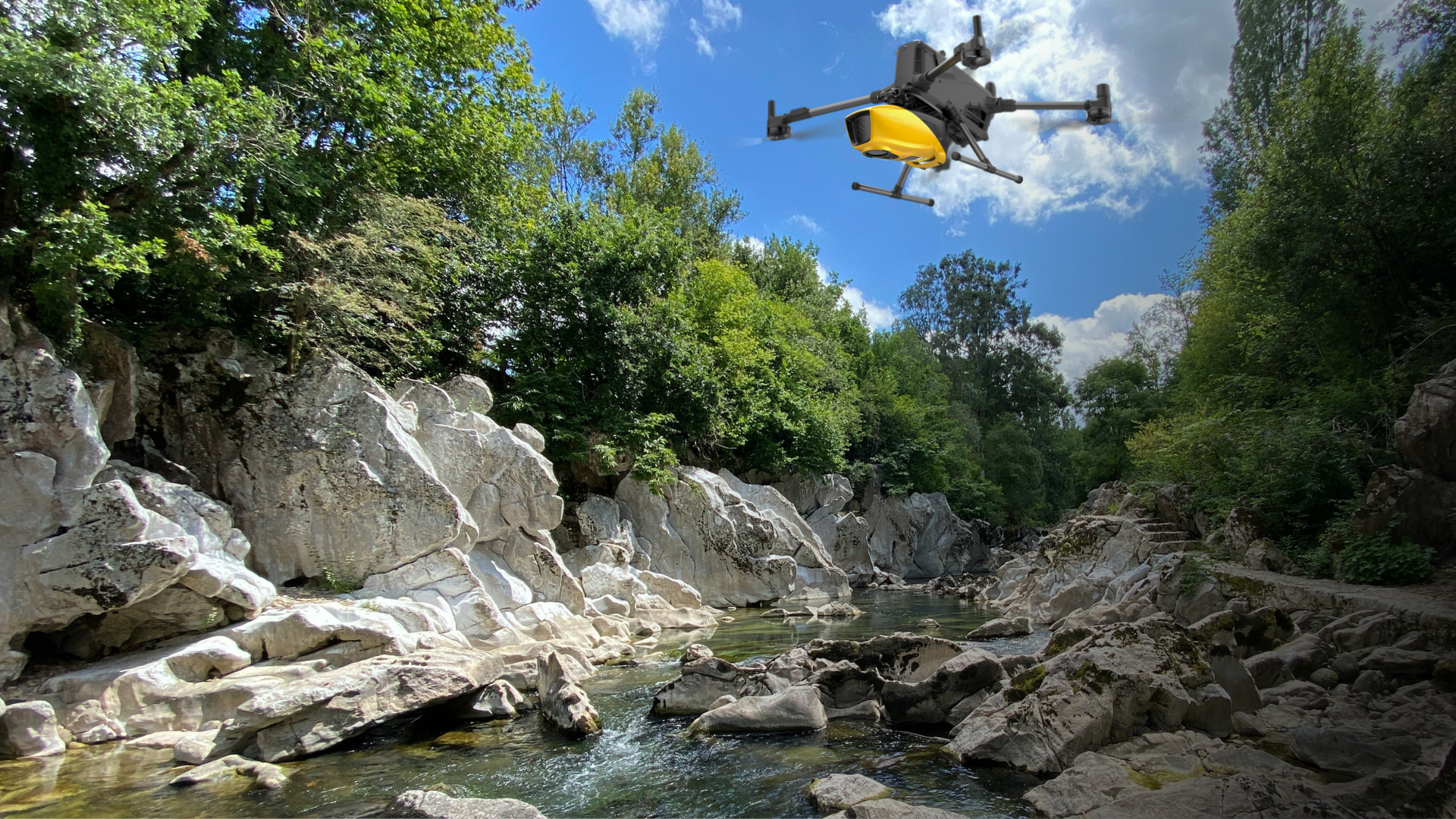
Modeling River Channels and Floodplains
Mapping major and minor riverbeds, particularly for river mobility studies, requires various cartographic methods. Topographic LiDAR is ideal for modeling riverbanks with centimeter-level precision and a strong ability to penetrate vegetation. However, it cannot map the submerged part of the riverbed, necessitating a second method to complete the data.
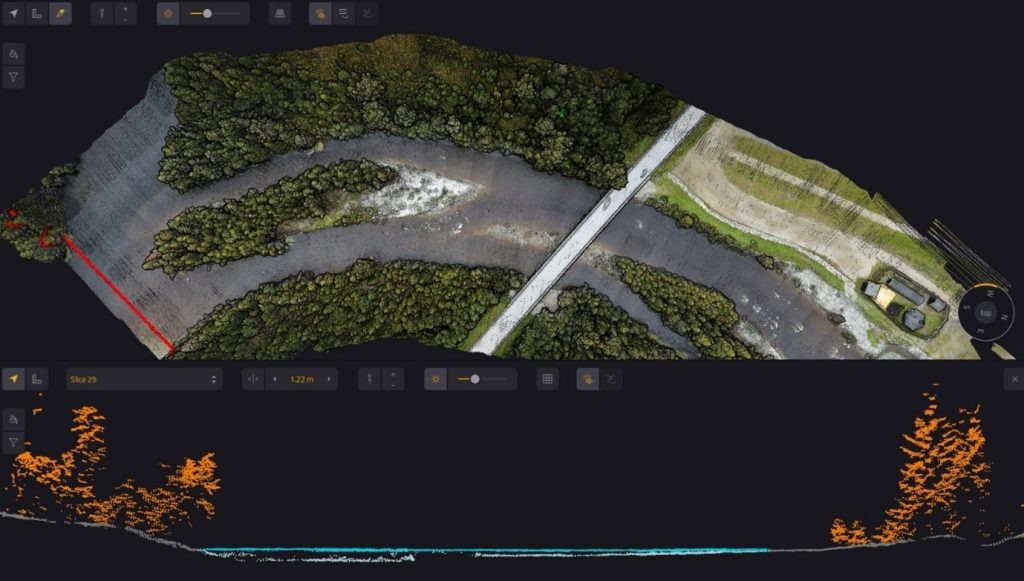
Combining Topographic and Bathymetric Methods
Depending on the site, accessibility may allow for regular transects to characterize different flow patterns in the riverbed. This conventional method is reliable and effective in many situations, offering centimeter-level precision. However, operators may face challenges in navigating wooded or rugged river environments, deep zones, or strong currents.
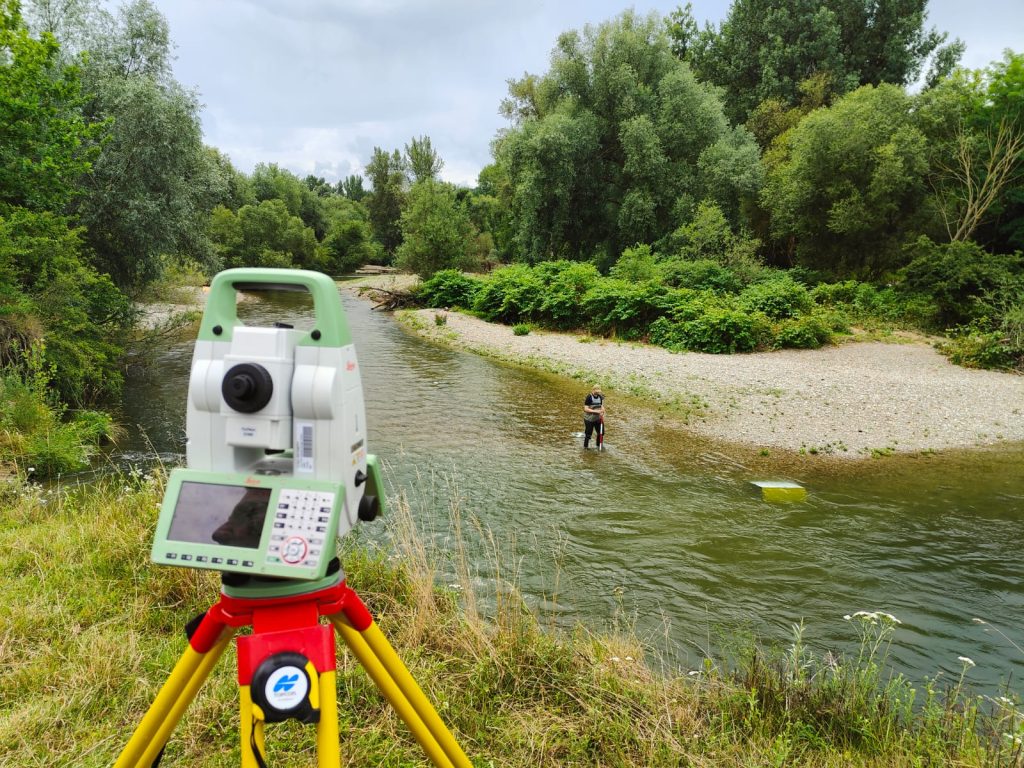
In such cases, using a boat or a surface drone equipped with an echo sounder is effective in less cluttered waterways with moderate currents. This also requires good site accessibility to transport equipment.
Complementarity of Methods
Conventional bathymetric methods, such as using poles or sounders, can be combined with topographic LiDAR to create a robust cartographic database. However, integrating topographic and bathymetric data can be time-consuming and may result in gaps or discontinuities between terrestrial and underwater data.
A New Comprehensive Method: Topo-Bathymetric LiDAR
Topographic and bathymetric LiDAR completes the range of tools with one major advantage: acquisition by drone allows the riverbed to be modelled, including the water layer, the submerged section and the banks. As digital modelling is carried out in a single operation, bathymetric and topographic data are generated at the same time with unrivalled continuity.
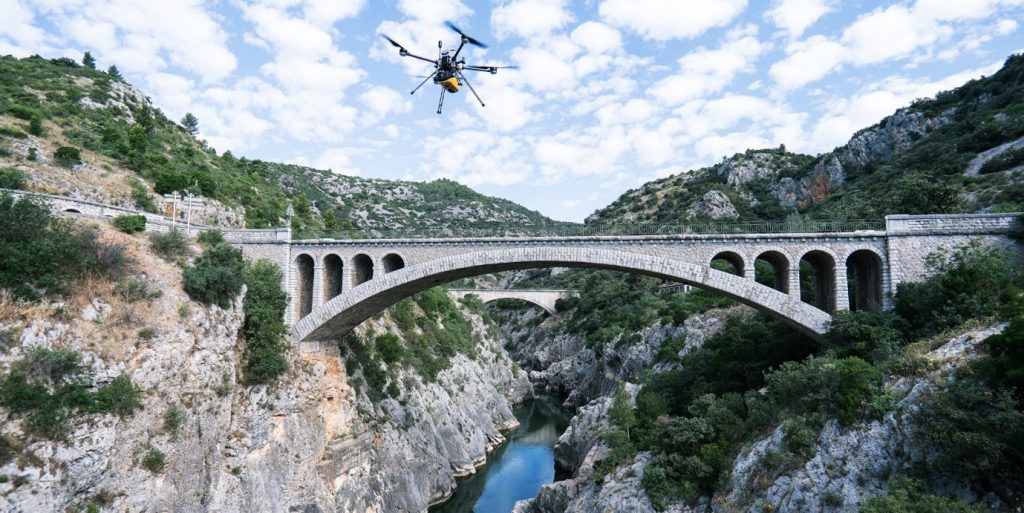
It is thus possible to map a 300-metre stretch of river with 50 metres of bank on either side of the riverbed in 10 minutes. And this with a data processing time of less than 2 hours. The digital terrain model (DTM) produced by this processing provides a unified geographical basis for underwater and terrestrial data without requiring the merging of two different digital models. The density of points at the bottom of the water is between 20 and 50 points/m².
The ability of topographic-bathymetric LiDAR to penetrate vegetation cover ensures data continuity between the wet bed and wooded banks. Riparian vegetation is integrated into the topographic data.
Limitations of Laser Technology
The primary limitation is the ability of light to penetrate water and reflect off the bottom. Unlike echo sounders, lasers do not propagate through fine sediments. The generated points represent water depth without accounting for sediment height, such as silt or mud.
The performance limit is expressed in Secchi units, measured using a Secchi disk.
The YellowScan Navigator topo-bathymetric LiDAR can acquire data up to two Secchi depths.
In rivers, if the Secchi depth is 3 meters, it can map deep pools of 5 to 6 meters. The reflection of the light beam depends on the coloration of the substrates, which must be considered when deploying this technology and processing data.
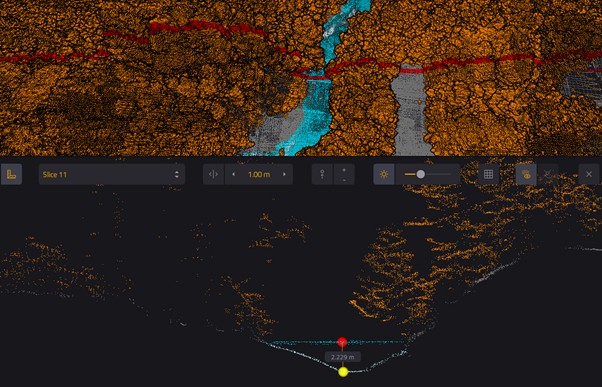
Example of a cross-section where vegetation cover extends over the river. Data is continuous even underwater at depths of over 2 meters.
Mapping a river while taking into account the alluvial forest provides a useful basis for addressing environmental issues in the most effective way possible. LiDAR data analysis tools can be used to classify the nature of points and, in particular, to isolate vegetation from the rest of the data. This makes it possible to distinguish the relief of riverbanks, detect signs of erosion, and identify secondary riverbeds hidden by dense vegetation cover.
Example of a section of watercourse with dense alluvial forest
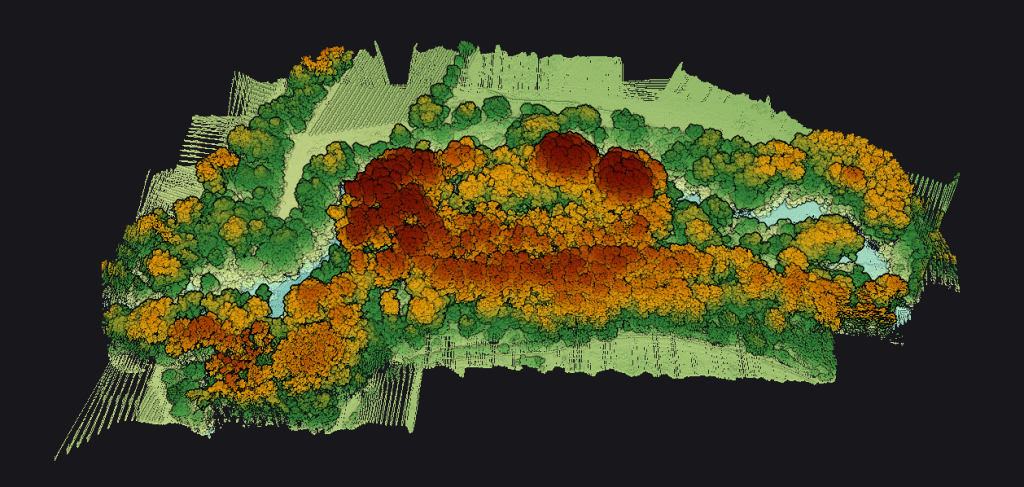
Elevation view with vegetation.
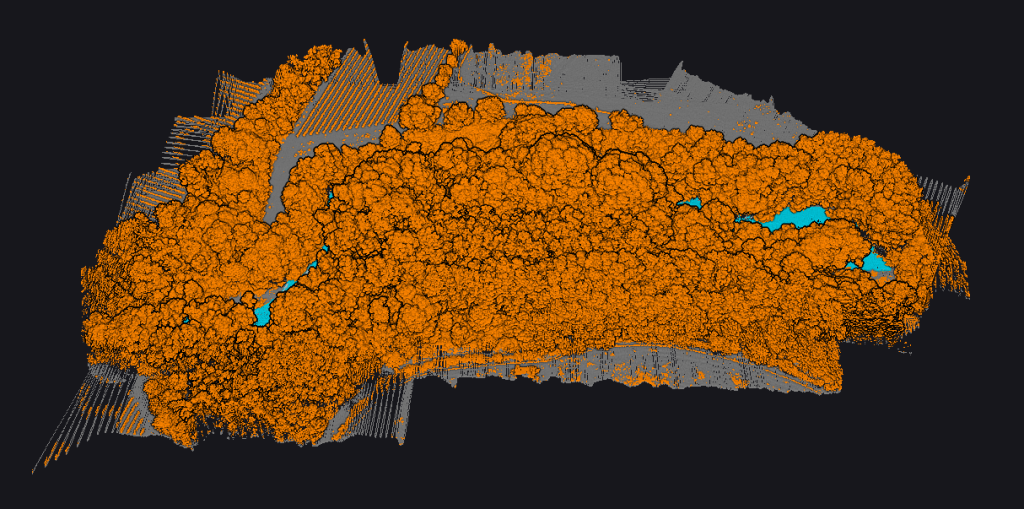
Data classification view.
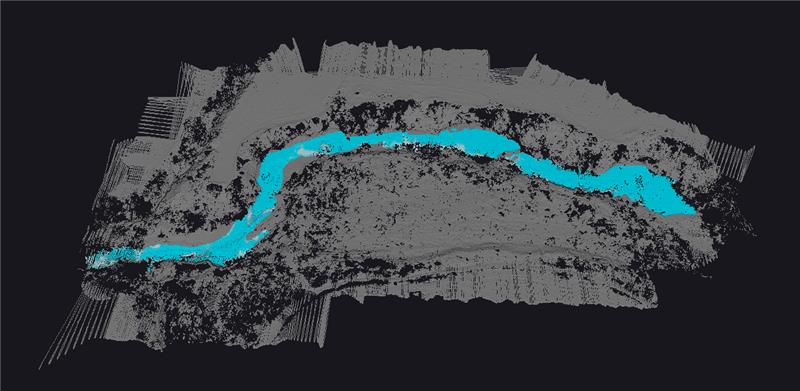
Ground + water view.
Coloring of points and nature of substrates :
Colored point clouds can be generated when LiDAR data is combined with a photo. This is a feature offered by the YellowScan Navigator LiDAR with an integrated camera.
Depending on the clarity of the water and the bottom, the natural colors of the riverbed can be distinguished.
Aquatic vegetation can appear as “noise” in bathymetric data. The identification of “patches” of seaweed can be done in conjunction with the coloring of points.
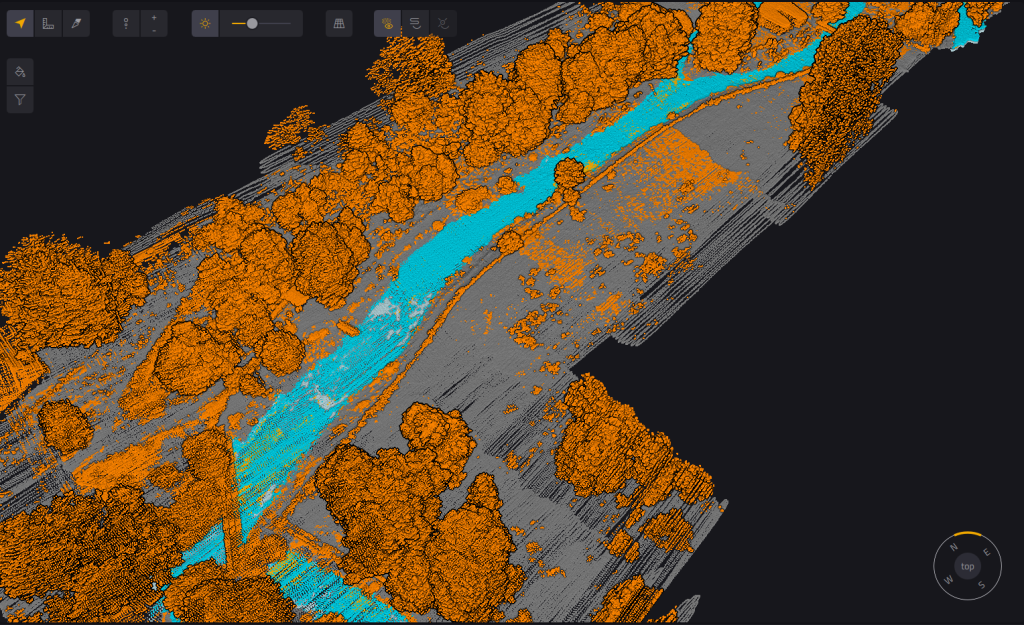
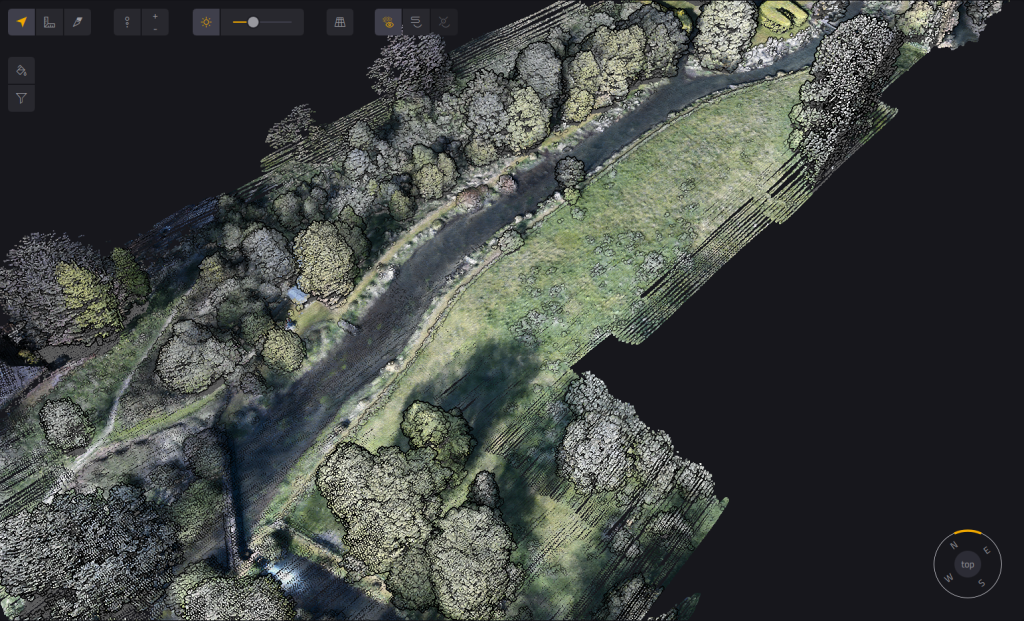
On the left, data classified according to type. On the right, colorized data.
Combining the two views can improve detailed data analysis with estimates of aquatic plant surface areas and volumes.
Mapping of a watercourse with diversion channels and hydraulic structures
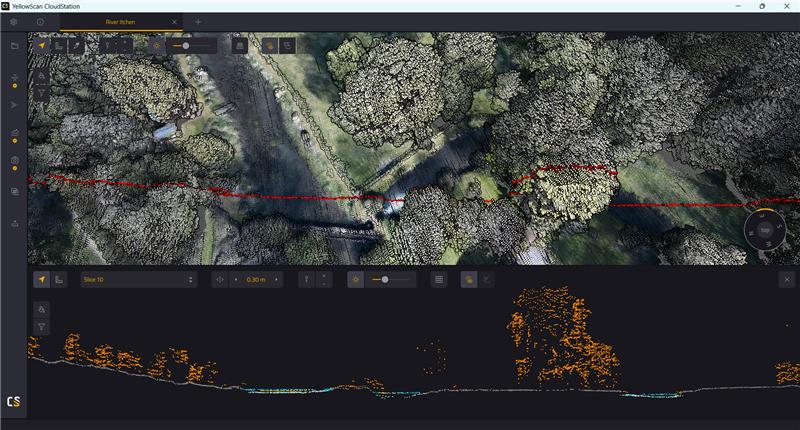
Elevation view with vegetation
Contexts can sometimes be complex to map on foot. Changes in properties between diversion channels and the original riverbed, for example. Drone LiDAR scans properties without needing to enter them.
Depending on their shape and size, structures appear in the digital terrain model. However, the terrain will need to be surveyed to obtain more accurate dimensions when sluices or underground channeled sections are present.
Erosion Monitoring
The repeatability of drone-based mapping is an asset for tracking erosion marks after each flood. For river mobility studies, topo-bathymetric LiDAR provides precise data to locate and measure problematic areas and assess sediment volumes from bank erosion.
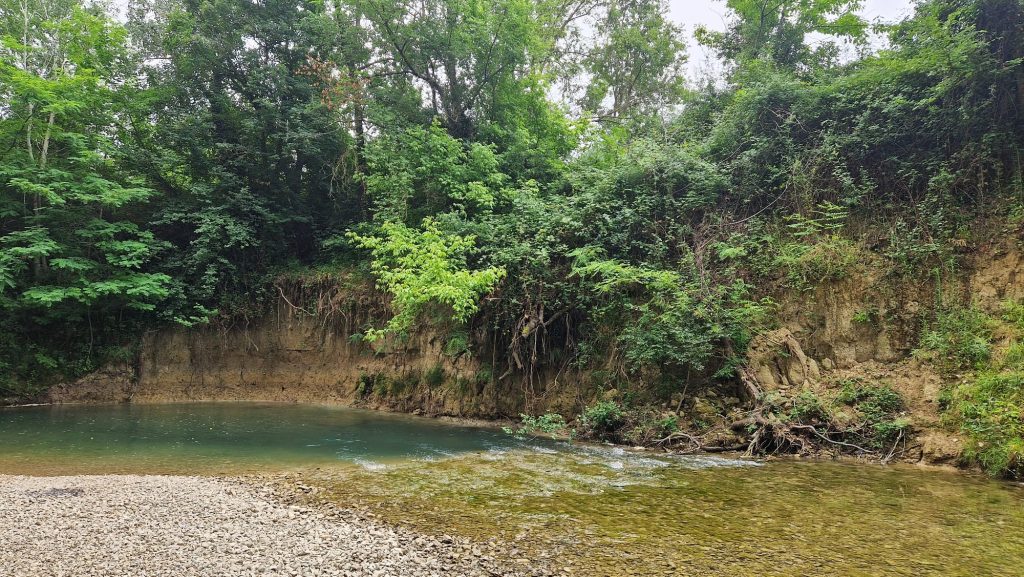
Erosion view in the river.
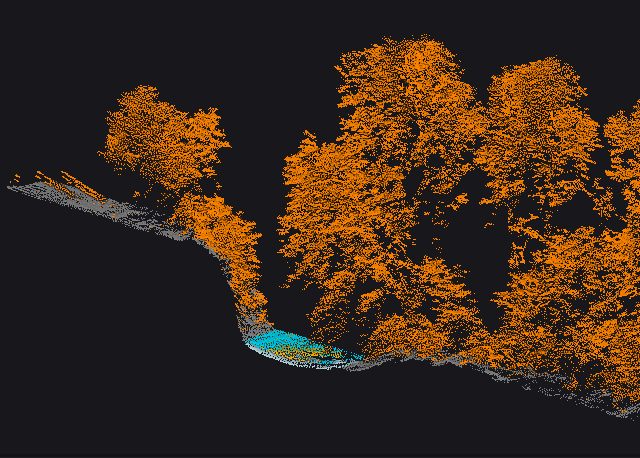
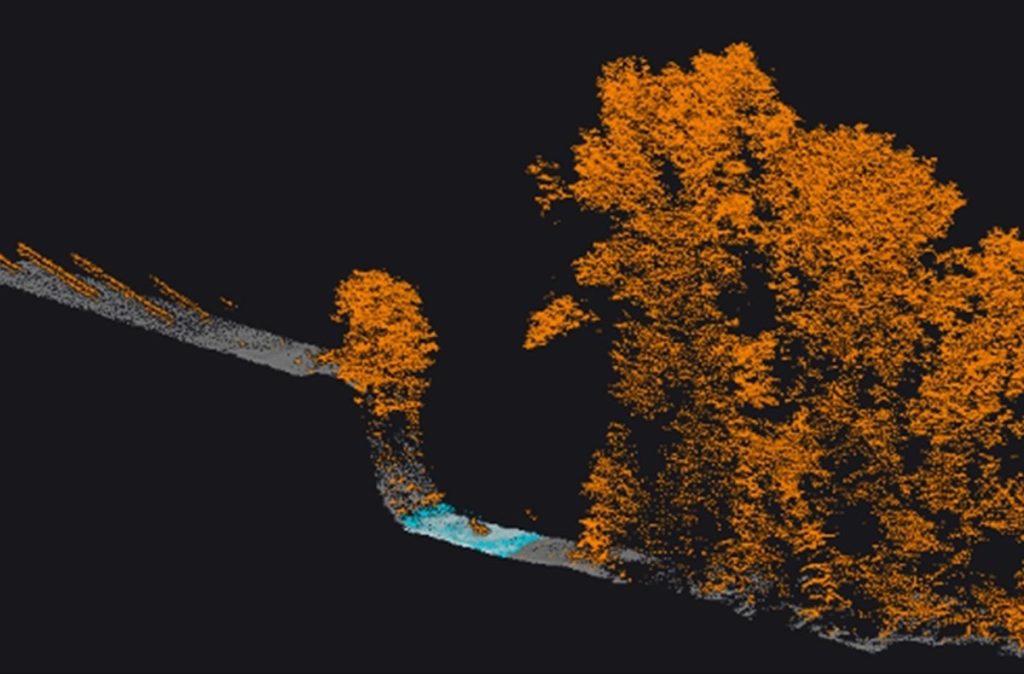
On the left, a cross-section showing a steep, vegetated bank upstream of an eroded area. On the right, a cross-section showing a very steep bank subject to severe erosion.
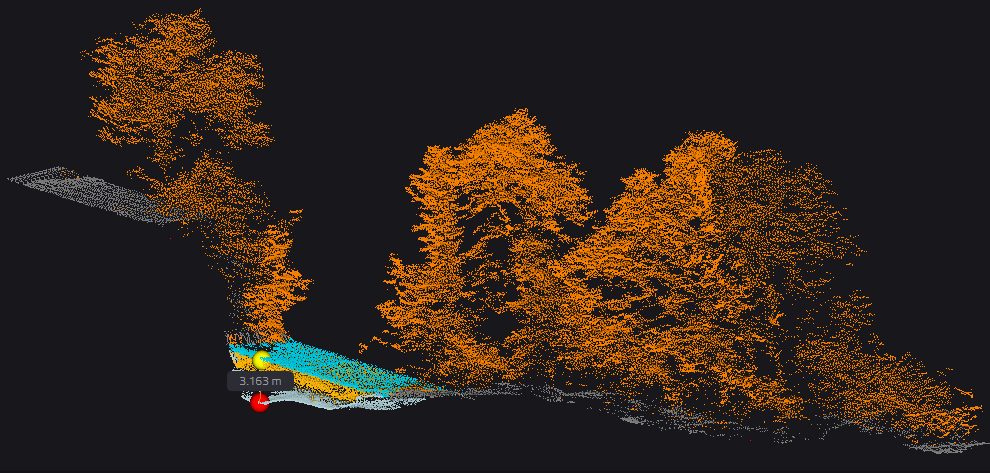
Visualization of a steep, vegetated bank of a pit with a depth of 3.16 m.
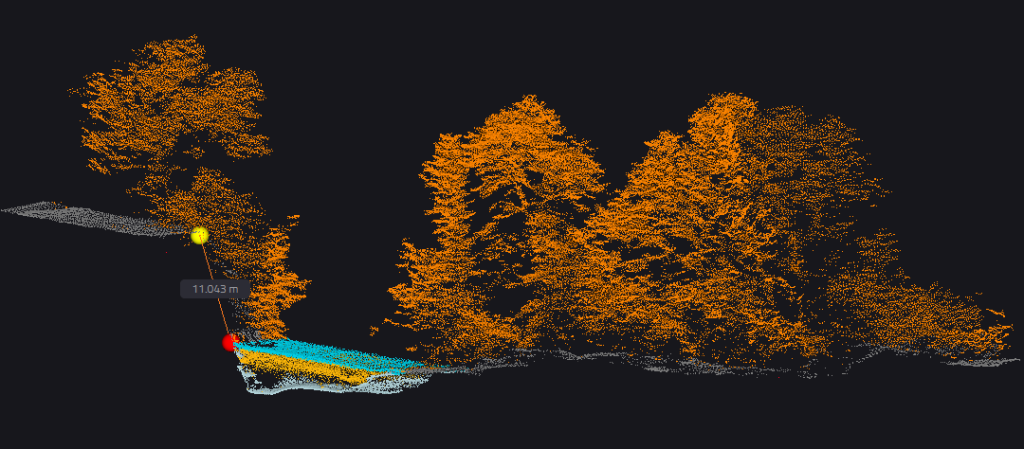
The height of the vegetated bank can be easily measured. Here, there is a difference in elevation of more than 11 meters. Classification of LiDAR data
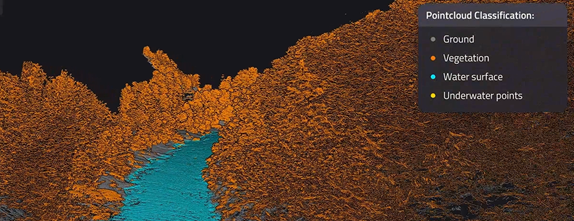
Visualization of data classified according to their nature in CloudStation. This automated function is a first step in exploiting field data. It is possible to refine this automatic classification to assign points to the data class that corresponds to.
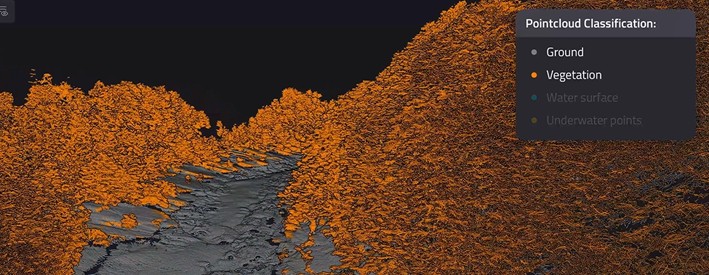
Visualization of terrain relief and vegetation without the “water” layer and without points suspended in the water that may be linked to several components (vegetation, bubbles, suspended particles, etc.).
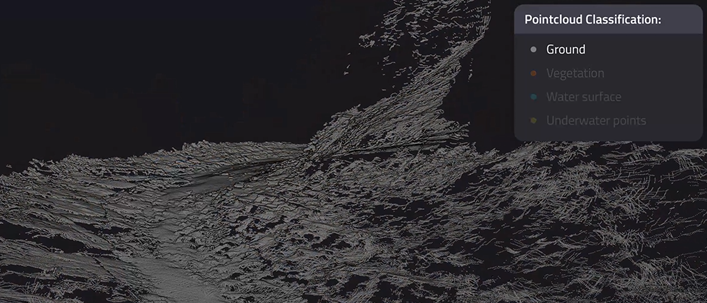
Visualization of terrain relief. This is mainly associated with mineral substrates and rocky outcrops.
Conclusion
Topo-bathymetric LiDAR technology complements traditional, robust methods used by surveyors and scientists. While aerial devices for river mapping are not new, the nature of the data produced has evolved.
The use of airborne devices to map rivers is nothing new, but what has changed is the nature of the data produced.
Limitations related to the laser’s ability to penetrate below the water surface mean that this technology must be used in clear water conditions and preferably during low water periods. Deploying a drone capable of carrying a topographic-bathymetric LiDAR requires a qualified pilot who is able to plan the mission in accordance with current regulations. Some airspaces may be protected. In this case, authorisation must be obtained.
Depending on the missions and the data to be produced, topographic-bathymetric LiDAR offers several advantages:
- Easy deployment on various terrains, even rugged or wooded areas.
- Rapid data acquisition and processing.
- A single digital terrain model integrating terrestrial and subaquatic data.
- Highly precise repeatability for mapping operations by reusing flight plans.
While topo-bathymetric LiDAR cannot replace all river mapping and monitoring protocols, it is highly valuable for large-scale mapping in.



